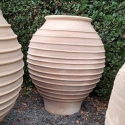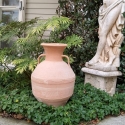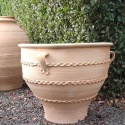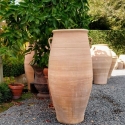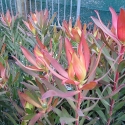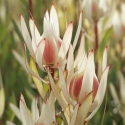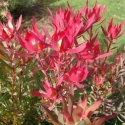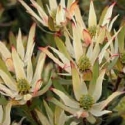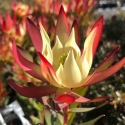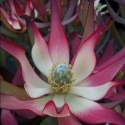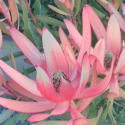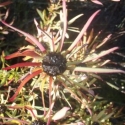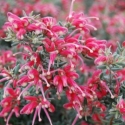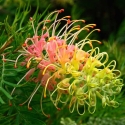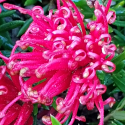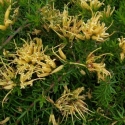Saturday 23rd April, 2022
Hi
Whew!!!!... That was a lot of pots
OMG reminder to self not to organize 28 pallets of pots to arrive on a short week. I think that half of that number is a manageable amount to unpack, sort label, take pics and get away into stock. There were so many pots that I had to get the gardening team in to help just unpack the last 8 to 10 pallets and for a few days there we were looking like we were a clay and glazed pot distributor.
I have to own up to the fact that when we were there looking at all these gorgeous pots, Tony and myself got a tad carried away especially when I spied a range of Cretan pots, hence the fact that we ended up with 28 pallets.
Now the last time that we had these
pots from Crete was some fifteen years ago and I think that they are way cool. They are such good quality and I liken them to quality Crystal glasses that ping when you tap them. The clay is more blond than what I would say traditional terra cotta is. There are some really awesome shapes of urns, jars, and pots and I imagine are of Cretan influence.
All of the urns and jars are good dimensions but also feel relatively quite light in weight for the size but seem to have inner strength and they definitely have that ping and ring of quality. Check out the story blow of the artisans that create these beauties.
The story from the Koutraki website.
I took my first steps in the field of pottery in 1985, next to old and renowned potters as the Koutraki family has been active in the field for more than 52 years. After 13 years of work in the field I decided to set up my own ceramics workshop. From 1998 until today I create in my own space with respect to the tradition and the ancient art of the potter. In 2003 I participated with forty French artists in the Normandy pottery festival. In 2004 I participated in the international festival of traditional ceramics of Rethymnon, representing Cretan pottery together with representatives of creators from other countries such as India, China, France, Ethiopia and Peru. My products come from the clay of the Cretan land that takes shape following the real traditional art. The unique colours of the pots of my workshop are due to the traditional wood stove, where the flames give the clay its unique and various colours.
In my workshop, the traditional wood stove is used, whose roots go back to ancient times, giving the clay creations their authentic, unique, colours. It is built according to tradition and ancient technique with respect for the environment. With clay from the Cretan land and water from the mountains baked in our wood kiln, extremely high strength clay is created in various environmental conditions and absolutely ecological. Only the kernel of the olive is used in the kiln, which is ecological without harming the environment. The high temperatures in combination with the traditional kiln give the clay creations their authentic, unique, colours.
The quality of the grain determines its quality. The main components of clay are aluminium, silicon and water. Its chemical name is hydrated aluminium silicate with chemical formula Al2O3.2SiO3.2H2O. The purest form of clay is kaolin which is the main component of porcelain. The clay is found on the surface or underground in the form of deposits with differences in purity and quality. In its extraction it has the form of pellets which melt after treatment in tanks with water. Thus the useful sediment is removed and cleaned by precipitation. The clay is used either as a type of clay, or in a mixture of different types of clays to get the result we want.
Conebush... Hmm, not so flattering perhaps we keep to Leiucadendrons.
If you are keen on growing flowers for cutting or arranging in a floral kind of way, then have you considered growing
Leucadendrons? Well not that they are flowers in a perceived fashion but rather brightly coloured bracts that surround a cone. I have learnt something new this week, in that our leuco's are separate male and female plants and if we are seeing a cone then it's a girl. It would appear then that most cultivars available for floral work will be girls as designers tend to like the cones. Hence conebush as it's not so common, common name.
Our female flowers are prized for floral work because they have a incredibly long vase life ranging from some 14 to 25 days and I guess that
Safari Sunset would have to be one of the most renown. Now
Safari sunset is a hybrid between a couple of species being L. laureolum and L. salignum and was developed here in in NZ in the 60s famed for its long stems and deep red and green bracts. there are many cultivars of this easy to grow shrub and most will suit floral work. Safari sunset has larger bracts and I must add that there are many many more cultivars all with a range of bracts, shades, shapes and form.
To prepare for the vase strip only the foliage that is under the waterline.. when cutting for the floral work you recut the stem 2.5 cm higher and can be done under water or under running water and use floral preservative of sugar and biocide. All going well a vase life of up to three weeks.
Leucadendron is derived from the Greek word Leukos meaning white and as we learnt last week dendron meaning tree and although there are actually some tree forms most are either small to large shrubs, and even those that spread like a groundcover.
Leucadendrons on the whole are pretty easy to grow as long as the spot that you plant them is well drained, and full sun, not really a shade plant at all. They actually like poor soil and probably don't need extra feeding but if you do feed them then use a low phosphorus fertilizer. Alternatively you could work in blood and bone as an organic style fertilizer. These shrubs actually benefit from having their flowers picked, well in my opinion they do or once the flowers or bracts are looking tired. Then cut them back firmly to the shrub frame work leaving a small amount of younger wood and they will keep the plant bushy otherwise they tend to become a tad rangy.
L. Safari sunset A fabulous evergreen shrub for winter colour. The erect branches have dense deep green leaves that are flushed with red. The flower bracts are golden yellow deepening to deep wine in winter. Fantastic for picking.
L.Amy Amy - Tidy erect growth - rosy red bracts early autumn through winter followed by creamy bracts early spring on long stems. Striking in full colour. I
L.Coppertone An erect shrub with coppery red bracts which in mid-winter develop a cream inner bract. As the bracts age they take on a further coppery red tone.
L. Jack Harre A compact little shrub that brings welcome colour to the winter garden. The erect branches are topped off with bright red star shaped flower bracts in winter. Great for picking
L.Incisum A lovely little evergreen shrub which provides some welcome colour in the winter months with stems of large creamy white flower bracts. Great for floral work.
L.Inca gold A highly ornamental shrub for a well drained hot spot in the garden. Green-gold foliage topped off with tulip shaped golden flower bracts that tipped with crimson in winter. Great for floral work...
Grevilleas of all kind... just in
Grevilleas also belong to the protea family as do leucos and of course proteas. I believe that Grevilleas are more native from over the ditch (our Aussie Neighbours) and again are plants that like full sun and are good in poor soil. Shy away from the phosphorus rich fertilisers. There are many shrubby ones but of course this genus has its share of trees, large shrubs and ground covers. I am going to generalize and this group of plants typically has spidery flowers and more spikey foliage but perhaps we look to what more I can learn next week. In the meantime
check them out on line and see if there is some for those difficult dry sunny spots in your garden.
Gordonton Art and Design Trail is not far away now
Just to remind you. The Gordonton art and design trail is coming up soon being Saturday 30th April and Sunday 1st May from 10am to 4pm each day.
Trail maps will be available on the day from The Mandarin Tree, The FirePot Café, Woodlands Garden Grove Café and at Bola Ceramics 180 Law Rd. Also maps available online soon on the Gordonton Art and Design Facebook, for more information go to The Gordonton Art and Design Facebook page.
Remember that we are closed for the morning on Anzac day and open at 1pm until 5pm and so its another long weekend and probably the last for a while. Of course its still the school holidays and still we have delightful warm and sunny weather even though I am so wanting it to rain. Therefore the garden is a great place to be right at this moment. LOL who knows you may find a spot to plant a leuco or two just because!!
If you are out and about with the kids as I know many of our team have been, Have fun and enjoy the time as they all grow up so fast.
Otherwise take care and have an awesome Anzac weekend!
Cheers Lloyd, Tony and the Wairere team

